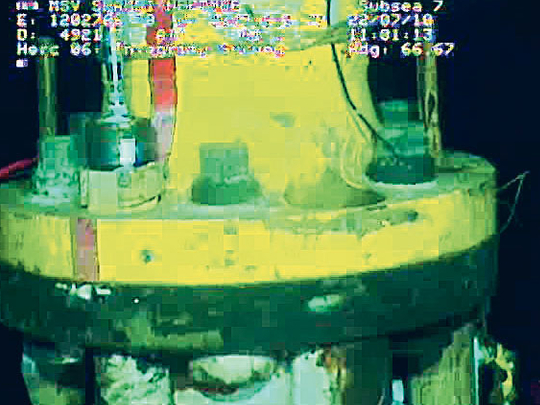
Atlanta: For more than three months, the world has waited for a permanent fix to the BP oil leak. It may not have to wait much longer. As early as tomorrow evening, the oil giant will take the first steps in a weeks-long process that, though highly complex, has a simple idea at its core: to cram a leaky hole full of cement.
It's the preferred, time-tested method for taming a wild well, and it is absolutely necessary, experts say. Even though no oil has flowed into the Gulf of Mexico since a sealing cap was installed over the gusher on July 15, they say it will take a cement job to shut the well for good.
"The cap is just a temporary solution," said Peter E. Clark, engineering professor at the University of Alabama. The cap is not bolted to the well, he said, but sealed with a hydraulic ring.
"I mean, you couldn't just walk away from that," Clark said. "But filling a hole with cement is forever."
The first step of the "static kill" operation will involve sending dense, specially-formulated drilling mud, weighing 13 pounds per gallon — about 1.5 times the weight of a gallon of seawater — from ships down a mile-long drill pipe and eventually into the well through a valve.
This will reestablish control over the high-pressure oil and gas that was lost by the operators of the Deepwater Horizon on April 20, sparking a massive explosion that killed 11 workers and sent the drilling rig to the seafloor days later.
Then, engineers will complete the last delicate inches of the relief well they have been boring since early May, trying to intersect the original well bore.
Operative question
That intersection point is roughly 18,000 feet below the Gulf surface, and engineers expect to break into the original well around August 10. For the first time in a disaster that has spanned more than three months, the operative question appears to be when, not if, and the method won't be experimental, but proven.
"Ultimately they're going to intersect that pipe down there," said Thad Allen, the federal government's spill response chief, in a news conference last week.
"This has been done before. Again, it's not novel technology." Clark said the odds of success are "close to 100 per cent". In August 2009 a drilling rig in Australian waters suffered a blowout similar to the one that sank the Deepwater Horizon.
Crews tried and failed four times to intersect the Australian well, about 1.6 miles below the seabed.
They started on October 6, and succeeded on the fifth try, in early November. In the Gulf, precision will be key: The casing pipe engineers are aiming for is only seven inches in diameter.
The static kill from atop the wellhead has been described as a value-added complement to the relief well effort. It may give BP a sense of whether, and where, casings are cracked, Allen said.












